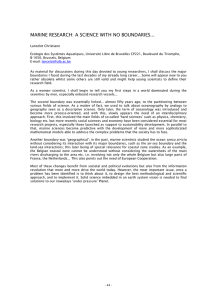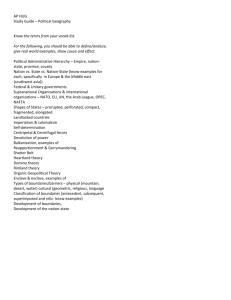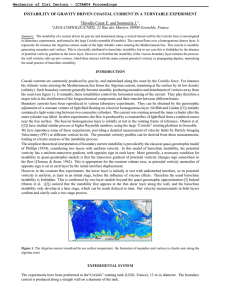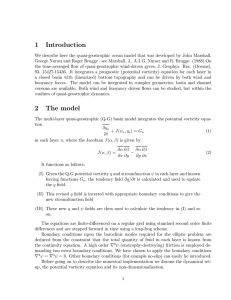Blake Rutherford Northwest Research Associates Redmond, WA
advertisement
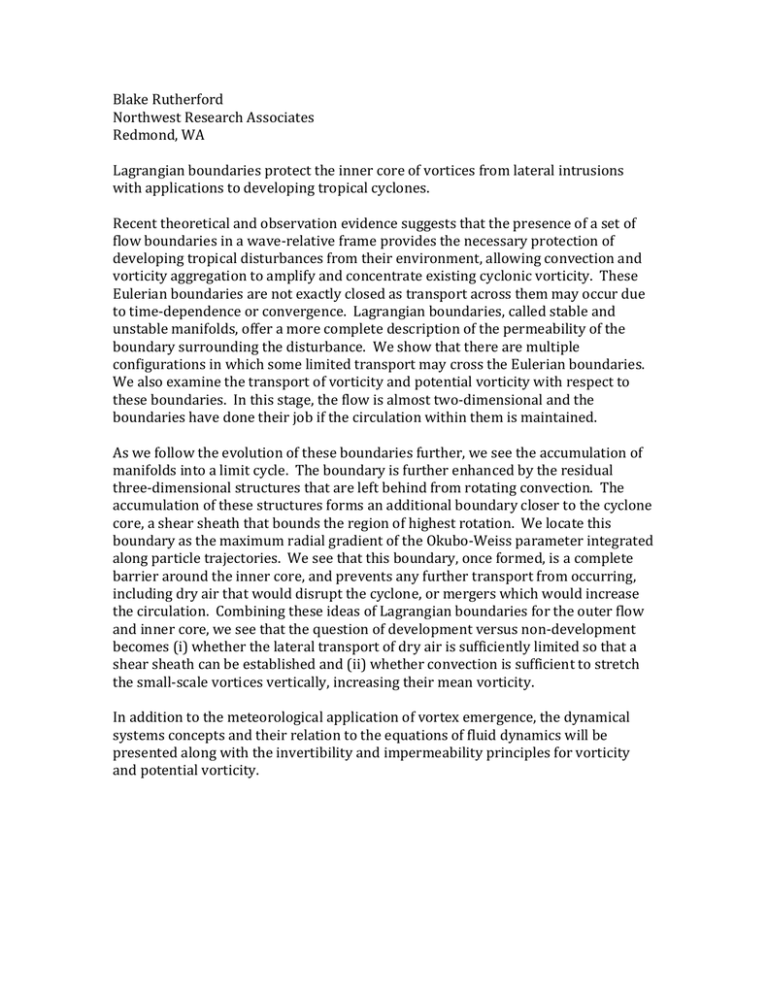
Blake Rutherford Northwest Research Associates Redmond, WA Lagrangian boundaries protect the inner core of vortices from lateral intrusions with applications to developing tropical cyclones. Recent theoretical and observation evidence suggests that the presence of a set of flow boundaries in a wave-relative frame provides the necessary protection of developing tropical disturbances from their environment, allowing convection and vorticity aggregation to amplify and concentrate existing cyclonic vorticity. These Eulerian boundaries are not exactly closed as transport across them may occur due to time-dependence or convergence. Lagrangian boundaries, called stable and unstable manifolds, offer a more complete description of the permeability of the boundary surrounding the disturbance. We show that there are multiple configurations in which some limited transport may cross the Eulerian boundaries. We also examine the transport of vorticity and potential vorticity with respect to these boundaries. In this stage, the flow is almost two-dimensional and the boundaries have done their job if the circulation within them is maintained. As we follow the evolution of these boundaries further, we see the accumulation of manifolds into a limit cycle. The boundary is further enhanced by the residual three-dimensional structures that are left behind from rotating convection. The accumulation of these structures forms an additional boundary closer to the cyclone core, a shear sheath that bounds the region of highest rotation. We locate this boundary as the maximum radial gradient of the Okubo-Weiss parameter integrated along particle trajectories. We see that this boundary, once formed, is a complete barrier around the inner core, and prevents any further transport from occurring, including dry air that would disrupt the cyclone, or mergers which would increase the circulation. Combining these ideas of Lagrangian boundaries for the outer flow and inner core, we see that the question of development versus non-development becomes (i) whether the lateral transport of dry air is sufficiently limited so that a shear sheath can be established and (ii) whether convection is sufficient to stretch the small-scale vortices vertically, increasing their mean vorticity. In addition to the meteorological application of vortex emergence, the dynamical systems concepts and their relation to the equations of fluid dynamics will be presented along with the invertibility and impermeability principles for vorticity and potential vorticity.
